Tamagakure
Not joined
"Perhaps there is a universal, absolute truth. Perhaps it justifies every question. But that's beyond the reach of these small hands." - Yang Wen-li
May
May your life and legacy forever live on.
"He died doing what he wanted, no matter what, right? I bet he was happy." - Guts
Hello, I still lurk here sometimes. I hope all of you are still doing well, my very first true community. Remember that no matter how tough the going may become, you will get through it. :)
Article by: www.landships.info
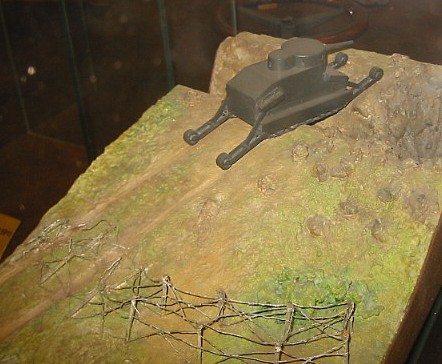
This model of the Burstyn Tank can be seen in the Army Museum in Vienna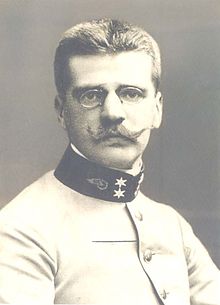
An Austrian army officer, K.u.K Genie-Oberleutenant Günther Burstyn (born 6/7 1879 in Bad Aussee, Steiermark, died 15/4 1945 in Korneuburg, Niederösterreich) inspired by the sight of the American Holt agricultural tractor with crawler tracks, designed a small tracked vehicle, which he called a Motorgeschütz (motor-gun), built it in model form, and sent this and the design to the Austrian War Office in October 1911. Had it been built the vehicle would have been 3.5m long, 1.9m wide and 1.9m high. Cross-country speed would have been about 8 km/h, road speed 29 km/h. It would be propelled by a 60HP Truck Engine. The four subsidiary wheels, two at each end on arms, could be lowered as required, the rear pair being driven as an aid to traction and the front pair, which could be pivoted, being intended for steering. It was supposed to have an armament of a small calibre fast fire gun (30-40mm calibre). Its tactical use would be close support of Infantry Attacks, for suppression of enemy MG’s, and also frontal attacks against enemy artillery positions.
The Austro-Hungarian War Office returned the designs to Burstyn saying they might be interested if a commercial firm could build it: Burstyn had no industrial contacts and so let the matter drop. Also, the War Office declined to finance any further work. Meanwhile the German War Department asked to see the design, but were not enthusiastic even though a leading German military periodical keenly endorsed the idea. A further complication arose when Burstyn in 1912 sought to patent the design and was told that this could not be granted as it infringed existing patents, including those for agricultural tractors. (He eventually was granted a patent, no Zl. 252 815 DRP.) Thus discouraged, Burstyn allowed the idea to drop, and it never progressed beyond paper.
Author: Tim Rigsby, Editor: Charlie Clelland, Illustrator: Roger Todd
The 150 ton Field Monitor
The 150 ton Field Monitor was a product of America’s growing industrial might, as well as the republic’s anticipation in becoming involved in the First World War.
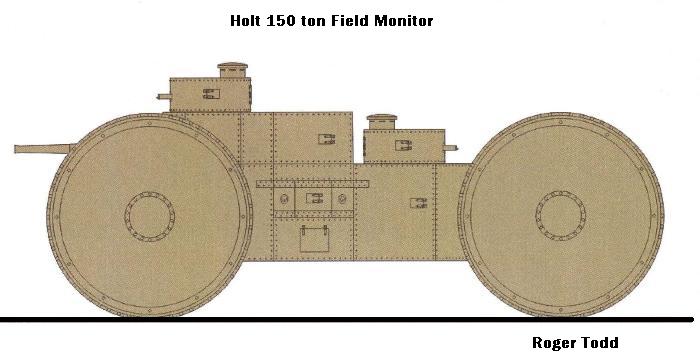
A paper project only, it was projected to be built in 1916. It was first envisaged that the Field Monitor would be used in Mexico, ranging across its great plains and deserts in search of the vigilante forces raiding into America. "Black" Jack Pershing put a stop to this idea; he did not hold motorized vehicles in high regard, except for their role as support vehicles. "Horses he demanded would win this war." Unfortunately the age of the horse was to end in the not too distant future � the age of machinery had come!
The 150 ton Field Monitor design has its origins with the designers of the Holt Steam Wheeled Tank, this being their initial design. Optimism in the States for the Big Wheel theory was still quite high, even though America had all sorts of tracked machines to experiment on. The designers chose to use two huge pairs of wheels, forward and aft, powered by two large steam engines, presumably designed by Holt, with the help of engineers from Doble, most likely their chief engineer, Abner Doble, who had designed the engine for the Holt Steam Wheeled Tank.
The Field Monitor was essentially a huge version of the Holt Steam Wheeled Tank, with four 20 foot tall wheels. Unlike the Holt Steam Wheeled Tank, the Field Monitor did not have a steering wheel in the rear, instead it had two of the four 20 foot wheels. Each wheel had an individual gear box, connected to a central transmission. The transmission was connected to the two steam engines, located in the center of the Field Monitor.
It was to carry two American six inch naval guns, arranged side by side in the front, in the same arrangement as the Holt Steam Wheeled Tank’s 2.95" (75 mm) mountain gun. (The six inch was a secondary armament for most American ships at this time.)
In the five and six-inch guns that could sourced from the Coast Artillery and the reserve store of the Navy there was shell power that might quickly be made available for the western front. When the United States entered the war the Ordnance Department at once set out to master the problem of placing these heavy fixed emplacement pieces on mobile field mounts. An inventory showed that ninety-five six-inch and twenty-eight 5-inch guns could be secured from the Coast Artillery and forty-six 6-inch guns from the Navy, while an additional 30 guns of the six-inch size were offered by a private dealer in this country. {These guns were shipped to the Holt manufacturing plant; to be used in various forms, such as Mobile tracked artillery, as well as Tank production. Such as the 150 ton Field Monitor and the 1500 ton Land dreadnought}
Minor alterations were necessary in many of the guns to make them adaptable to field mounts, and the Navy guns, ranging from 30 to 50 calibers in length, had to be cut down to a uniform length of 30 calibers. The long six-inch seacoast guns were not shortened because it was planned to return them to the Coast Defenses from which they were taken. Speed in the manufacture of the Carriages for these Guns demanded that they be of the simplest design consistent with the great strength necessary to bear the weight of this fixed emplacement material. The carriage designed for the five and six-inch naval guns having been placed under test and found to meet all requirements by September of 1917 and orders were placed for ninety-two 6-inch Carriages and twenty-eight five-inch Carriages.
Owing to the great weight of the long six-inch seacoast guns, however it was found at that it would be necessary to carry them separately on big transport wagons. Such a wagon was designed and an order placed for 55 wagons in February of 1918.When the Armistice was signed practically all of these mounts had been completed. Seventy-two entirely assembled six-inch units and twenty-six; five-inch units had been shipped for overseas duty.
Secondary armament was to be 10 Colt Model 1895 Machine Guns, (Potato Diggers) currently being used in Mexico. (The Colt-Browning M1895 was one of the first "successful" gas operated machine guns designed by John Moses Browning. It was offered to Colt by Browning in November 1890. Originally chambered for .30-40 Krag, rebarreled and rechambered versions in 30-06 Springfield were designated M1895/1914. It became the first automatic machine gun adopted by the United States and saw limited use in the Spanish-American War and the First World War.)
The M1917 Browning Machine guns would later replace the Colts, after the United States adopted the M1917 as there main machine gun in late 1917. (The M1917 saw limited service in the latter days of the First World War. Because of production delays, only about 1,200 Model 1917s saw combat in the conflict, and then only in the last two and a half months of the war. They equipped about a third of the divisions sent to France; the others were equipped equally with machine guns bought from the French or the British Vickers machine guns built by Colt in the US. Where the Model 1917 did see action, its rate of fire and reliability were highly effective.)
The Field Monitor would carry two machine guns in each turret, located at the front, above the main guns, above the driver’s and commander’s position, as well as one at the rear between the large Wheels.
According to the design notes by Holt, the machine gun turrets would have had limited transverse due to being placed between the large steel wheels. The arcs of fire were only 20% front, 10% at the rear. With only roughly 2 to 4% per side, only if the Monitor was still, 0% if moving. [Note: should these figures be angles, or are they describing the percentage of area covered at each side?]
Unfortunately, this design never left the drawing board and, like many other war designs, has faded from memory. Due to its weight and bulkiness, and unorthodox running system, it is most likely the 150 ton Field Monitor would have been a dismal failure. Of course, that is just one’s opinion.
Armament:
Two Naval 6inch Guns.
Ten Colt-Browning Model 1895 Machine Guns, later Browning M1917 Machine Guns.
Armor: 24" to 70".
Weight: estimated at 150 tons.
Crew: 20
The 200 ton Trench Destroyer
The 200 ton Trench Destroyer was yet another American tank design of the First World War, dedicated to the task of rolling across the Western Front in pursuit of the Hun, though ultimately tossed aside for a more reasonable solution. As stated above, America’s industrial might was attaining new heights during this time, and the design grew out of many put forth by all manner of inventors, trying their best to aid the war effort, and of course make a little money (when opportunity knocks).
This design, although enormous, a Behemoth in proportions to the tanks currently on the battlefields in Europe, was quite sophisticated inside, while the outside resembled a huge disfigured A7V, brisling with six times the firepower of the German machine.
The chassis was enormous, and was originally slated to be used as the basis of a large excavating machine. The design for the track system was designed by the brilliant Pliny Holt and Elmer Wickersham (the latter of land torpedo fame). Their design for the excavating machine grew out of the need for heavy earth-moving machinery during the colossal undertaking of the Great Dig, the Panama Canal. Although opened in 1914, by late 1917 there was already a need for the canal to be widened. But this would have to take a back seat as long as the War raged in Europe, for fear of sabotage. The design had its origins in late 1915 at which time, of course, there was no thought of the machine being used in a military role.
The track system was huge, twice the size of the A7V to which it bore a marked resemblance. From the photo you can discern the embryonic excavating equipment, which had already started to be placed on the chassis. Most of this equipment, of course, was removed to make room for the enormous amount of firepower the Trench Destroyer was to be fitted with.
No definitive information exists on the type and size of the engine or transmission used. The only information states it was to run on petrol. No dimensions have been unearthed except for the two different descriptions of the Commander’s area on top of the Trench Destroyer, both being provided from two different Patton resources.
As a twist to this story, a Canadian by the name of Stephen Kupchack, who happened to be one of the hull designers for the Trench Destroyer, designed an Armored Vehicle based on the 200 toner Trench Destroyer. {After the idea was laid to rest, building the enormous Trench Destroyer.} Mr. Kupchack submitted his design to the English War Office in late 1918, and it was dully dismissed, after the War Office asked Mr. Kupchack to produce a full size machine for demonstration purposes. They offered no financial service to accomplish this.
Without the backing of Holt, Mr. Kupchack’s design had a very feeble track design, which would possibly have been too weak, even if he could have built a full size model. His armament was also scaled down. The drawing does not represent any specific piece of armament; Mr. Kupchack took the liberty of drawing a resemblance to no specific piece, known at the time. He had no connections, to be able to fit his Armored Vehicle with any form of weaponry. This was a huge hindrance, but he was hopeful, if the War Office liked his design, and backed him financially, he could rely on them to supply the armaments.
This of course did not materialize, the fate of many other designs for Landships at this time which simply fell through the cracks.
The following are quotes from different Patton Resources, describing his involvement with the 200 ton Trench Destroyer. The following is a quote by General Patton, from the book Treat ’Em Rough, Describing the 200 ton Trench Destroyer. This of course is in the 1940s, as he writes down information for his War Memoirs.
"While in France in 1918, I was directed to report on the military value of a machine going by the euphonious name of the "moving fort and trench destroyer". An elaborate set of blueprints accompanied the description of the horrid instrument. Those prints depicted a caterpillar propelled box of generous proportions covered with two inch armor and bearing in its bosom six "75s", 20 machine guns, and a flame thrower while in the middle was a rectangular box 6x3x2 feet in size with the pathetic epitaph "engine not yet devised". I do not know if atom bursting was known at that date, but if it was, I feel certain that an engine actuated by that sort of power must have been intended as no other form of power occupying so small a space could have propelled the 200 tons of estimated weight of the "fort"."
The following is how Patton describes the 200 ton Trench Destroyer in his personal WW1 papers. Dated 1918 Patton Papers P A 198.
- "I have been given a task to report on the military value of a set of plans containing an enormous machine; by the name of "Moving Fort or Trench Destroyer"". "I believe the dubious name of Moving Fort should be given to the 1500 ton monstrosity that we also discussed today."
- "The prints depict a caterpillar propelled box of generous proportions covered with two inch armor and bearing in its bosom six French 75s, and openings for at least 20 machine guns. On the top is located a box 6 x 5 x 4 feet, {6x3x2 Was quoted from Treat ’Em Rough} housing machine guns, and the commander’s location. The Trench Destroyer looks in my opinion similar to the German so called A7V but twice as large."
- "Entrance in to the beast is from the rear via twin armored doors on either side of the 75. The inside is crammed full of equipment, men and weapons. I have been informed one track assembly has been converted by a tractor firm in the states to build a mock up, for evaluations. It is to be shipped to France in July (1918) "{This of course never materialized}
- "The estimated weight is between 180 and 200 tons, I am dully aware; this monstrosity will have a rough time of it passing through villages to get to the front. G.Rockenbach has informed me, that the US needs to step up on its tank designs, and this may be a possible ending to the US requiring the aid of its allies to provide tanks."
The known projected weight for the Holt excavating machine was to be around 60 tons. Extremely large for the time, taking into account the weight of the weaponry, the large amounts of armor, and its capacity for 30 men, this would possibly have been an extremely formidable Armored Vehicle. Little else is known about these beasts of the Great War, except even their formidable size is diminutive compared to other designs of the same time period, like the 1500 ton Massive Leviathan, designed to crush armies and cities into oblivion, and the Shuman Land Battleship, amply called the "Superdreadnought" with 200 foot wheels. The story only begins.
Armament
Six 75 mm cannons, They were actually the famous French Canon de 75, modèle 1897s.
Twenty M1917 Browning Machine Guns.
One Flame Projector, Tractor Type, Mark I
Crew: 30
Weight: 180 to 200 tons
References
- Treat ’Em Rough by Dale E. Wilson
- Patton Papers, Memories of the Great War. 1919 (1-4)
- Holt Digest, Volume 3, Volume 8, 1917-1918 respectively.
- Rockenbach Papers. Volume 5 Great War 1921
- Pliny E. Holt, Memoirs of a Pioneer 1930
- Military Might of the Industrial Nation, 1916-1921 By Langford Stevenson 1923.
Author: Aleksandr Drobyazko, Editor: P Radley
It is a well known fact, that Russian industry in the beginning of the twentieth century strongly lagged behind the industry of Europe. Nevertheless, the development of the country showed impressive progress. Together with Russia's growth of manufacturing, Russian engineers had been developing a number of interesting projects in different areas of technology, including military ones. One interesting AFV project was offered by Russian engineer Vasiliy Mendeleyev (1886-1922). He was the son of the well known Russian scientist Dmitriy Mendeleev. Vasiliy Mendeleyev had graduated from the Kronshtadt Marine Engineering School, and worked as the engineer at a ship-building factory.
Over the course of several years (1911-1915) and without any assistance, Mendeleev worked in his own time on the AFV project. One of variants of this machine, with weight about 170 tons, was to be be armed with 120-mm gun placed in the forward part of the armored hull, and with a machine gun in the rotating turret. It carried a ammunition load of 51 shells. The thickness of the armored protection of the hull, was: front: 150 mm, sides and rear: 100 mm. Maximum speed: 24 km/hour. It was to have a crew of 8. The tank was never built.
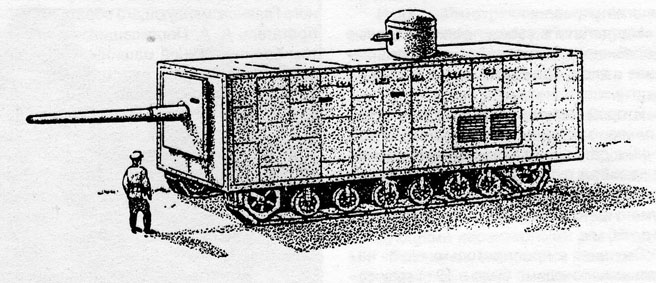
Inside the armored hull, beside the engine, gear box, gun and the internal equipment, the running gear was placed. It was to be powered by a powerful petrol engine. The petrol tanks were to be placed in the aft part of the machine, in an isolated compartment. The gear box was mechanical, with four forward gears and one for reverse. The direction of rotation of the cranked shaft of the engine could also be changed.
The tank had a special gas suspension, which not only eased the travel of the vehicle when on the move, but that also allowed for the tank to move with the hull half-lowered hull, and even completely lower the hull when stopped, if necessary. The idea of the inventor, was that the full or partial lowering of the hull would protect the most vulnerable part of the machine, the running gear, from enemy fire.
Lowering the hull to the ground also protected the running gear from the harmful effects of the powerful recoil of the gun. Movement over long distances was to be done by rail, but the AFV was supposed to have a special device that allowed it to be moved upon the rails, and even move by its own, or with the help of a locomotive. To facilitate steering of the tank, V.D.Mendeleyev suggested add apply pneumatic servo-drivers to the main friction clutch, a box of transfers and the mechanism of turn. On a case the pneumatic servo-drivers failed reserve mechanical drives were the be provided. The working of the gun was also be done with mechanical help, with increased the rate of fire. The machine-gun turret, that could be rotate 360 degrees, could also be lowered into the hull, again with the aid of a pneumatic device. A pneumatic device was also used for the adjustment and tension of the tracks.

Position for firing the gun (the hull is lowered to the ground).
All these pneumatic devices were provided with necessary quantity of compressed air with the aid of a special compressor, driven by the engine of the tank. Four operating posts were provided, which allowed any of members of crew to operate machine, in case the driver was wounded or killed or the steering apparatus provided to him was damaged. There were plans of making a second variant of the Mendeleyev Tank, but only sketchy data is known. It was supposed to have a larger gun with a calibre of up to 127 mm, two machine-gun turrets instead of on, plus an armour with thickness up to 50 mm.
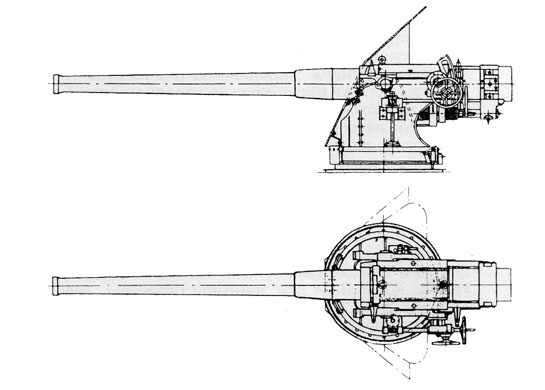
The 120-mm Canet gun, which Mendeleyev planned to use as main armament.
But was it really necessary to protect the machine with so much armour, and to arm it with such a large-calibre gun in 1911? Tanks of WWI were protected much more poorly, and the calibre of tank guns did not exceeded 75 mm. Mendeleyev’s tank is not to be seen as a proper tank, but more a mobile artillery position or big self-propelled gun, primarily used for the destruction of fortifications. In other words, it was thought of as a gigantic Bunker-buster. (This idea would later surface, in the form of the also unpractical but impressive KV-2.) It could not really be used as a tank due to its limited mobility. However, all this at all does not belittle the merits of talented Russian engineer V.D. Mendeleyev. His project was a truly original work which contained a number of truly courageous and innovative features, and some of them has been realized later on.
It's amazing how quickly these past 5+ years have gone, but I'm still kicking. My activity has taken a dramatic drop for the time, however I appreciate all who have stuck by me. My main ambition was simply to improve this community, and while I feel I haven't been contributing as of late, there's always room for improvement. Anyways, cheers to another 5 years =3
May 14, 2014
Godzilla 



A movie review by James Berardinelli
Where Roland Emmerich and Dean Devlin failed spectacularly, Gareth Edwards has succeeded. Although the 2014 edition of Godzilla isn't the be-all and end-all of monster movies, it's a respectable big-budget effort. Most importantly for legions of fans across the globe, it's a Godzilla movie, honoring not only the look and feel of the Big Green Lizard's most famous outings but paying homage to his entire history. Many of the wrongs committed by Emmerich and Devlin are corrected here. If only the 3-D had been abandoned...
This incarnation of Godzilla transpires in the same universe where at least some of the Toho Godzilla movies were set. It explicitly references the 1954 debut feature and refers to the title creature by the name of "Godzilla." At the very least, that should allay some of the die-hard fans' worst fears that this movie might continue from where the universally despised 1998 film left off. That GINO (Godzilla in name only) has not been exhumed from its shallow grave.
In many ways, Godzilla is a cousin to Edwards' earlier movie, Monsters, in that it focuses more on the ineffectual humans than the monsters. Godzilla is a force of nature like a hurricane or a tornado. Men can prepare for him and execute search and rescue missions, but there's not a lot they can do to stop him. And, while we're treated to several epic lizard-on-giant insect skirmishes, these are observed from the human vantage point. The movie is about Godzilla but it's not viewed from Godzilla's perspective.
The movie takes its time with the big reveal, keeping Godzilla mostly hidden until about midway through the movie. The early scenes transpire 15 years in the past in Japan, where unexplained tremors are threatening the integrity of a nuclear power plant. The husband and wife team of Joe and Sandra Brody (Bryan Cranston and Juliette Binoche) are tasked with investigating the situation and preventing a disaster. Later, in the present day, the Brodys' now-adult son, Ford (Aaron Taylor Johnson), finds himself in the same part of the world facing a similar situation. But this time, things go beyond the ground shaking and collapsing. A huge insect-like creature, mutated by radiation, rises up and wreaks havoc before going in search of its mate. And an unknown creature out to sea, attracted by the activity, begins to make its way toward land. Las Vegas, Hawaii, and San Francisco end up in the pathway of one or more of the monsters.
Godzilla offers a slow build-up, punctuated by various teasing moments, many of which pay homage to classic monster movies. It provides us with the time and opportunity to get to know the humans before the monsters start rampaging. For Ford, we get a fairly compete backstory, seeing him as a boy facing the evacuation of his home and the destruction of his lifestyle, then as an adult with a family of his own. Aaron Taylor-Johnson isn't asked to do much more than be an all-around good guy willing to sacrifice himself - a role he capably fills. Juliette Binoche makes the most of very limited screen time. Bryan Cranston, despite looking odd with a full head of hair, offers a considerably toned down performance from what Breaking Bad viewers might expect. Elizabeth Olsen, soon to join The Avengers alongside Taylor-Johnson, is wasted as Ford's wife, who has pretty much nothing to do except look worried. One of the greatest points of interest, especially among Godzilla fans, is whether Edwards' version of the creature honors its roots (which the Emmerich/Devlin incarnation didn't) - something it achieves. The Godzilla of this movie is strongly based on the 1954 version but without the "man in a suit" element. This looks how one might expect a giant radioactive dinosaur to appear in this age of top caliber CGI. The iconic roar has been changed to make it deeper and more "throaty." In general, the special effects are excellent, although it's baffling why this was post-converted to 3-D. I know I sound like a broken record but it adds nothing. To the extent that summer movies are all about mayhem and destruction, Godzilla delivers everything expected of it, and perhaps a little more. At the very least, it argues that Hollywood can deliver a Godzilla movie without completely screwing up. Monsters postulated that Edwards might be the man for the job and Godzilla has vindicated his selection. The movie has its weaknesses (the build-up is too long and some of the subplots could have been truncated) but it works. This may not exactly be the Godzilla I grew up with but it's a more than acceptable upgrade. Reelviews.net
- Storm states that multicore support will not strongly influence game performance
- Storm states that the supertest patchnotes are not final: “there is a long way to go till the patch goes live”
- regarding the “hidden Sherman nerf” in 9.0, it was intended, but Storm states that the fact it did not appear in patchnotes first was a mistake of the program, that generates the list of tank changes for the patchnotes. They fixed it and Storm hopes it won’t repeat itself.
- a player asked that there are rumors about a mod, that actually makes the game display tank silhouette even beyond the official render range, Storm replies that that would be possible only if the mod actually takes the tank position beyond the render range from the minimap, eg. such mod won’t display tank and turret orientation
- regarding sharp FPS drops with the shadows enabled: “Shadows eat resources and that’s something we can’t do anything about”
- Storm confirms that there are sharp FPS drop issues (“freezes”) after a tank is discovered (SS: “lit up” – probably meant when an enemy tank is discovered), they are working on a fix
- Yurko2F states that there is no need to be hysterical about the nerfs, players should try the nerfed vehicles first on the test, a lot of parameters did not change
- statistically, when considering tank buff or nerf, results of players with winrates from 45 percent to 65 percent are taken into account, this range is also internally divided for statistics purposes
- when balancing tanks, the most important category of players WG aims at are “daddies” (SS: a Russian general term for men, who come home from work and want to spend a few battles in WoT, eg. not schoolkids or students)
- Storm states that roughly 10-20 percent of shots fired are gold rounds, these statistics are very dependent on tank measured and vary wildly from tank to tank
- Borsig is going to get nerfed
- apparently, some form of player education (tutorial?) is still planned
- when aiming at long distances via sniper mode, tanks sometimes move by “jerking” and “twitching” (SS: as in “teleporting short distances”), this is according to Storm not a glitch, at such distances the tank coordinates are transmitted by server less often to save traffic, it will stay the way it is (it is not a problem of client, but WG datacenters would not handle increased traffic)
- Storm personally picked the blue color for teamkillers :)
- apparently there are no plans for new tier 8 premiums in 9.1
- multiturret mechanism – not this year, it has really low priority
- the “damage blocked by armor” statistic is bugged (specifically, spaced armor apparently doesn’t count), it will be fixed
- developers considered reworking the arty aim circle to include the gun traverse
- 9.1 will bring many small optimization fixes, but no big ones
- RU251 German LT8 will come this year in the same patch as the US light tanks
- tier 8 light tanks will be buffed
- Storm states that despite the TD class bonus for camo after a shot will be removed (SS: eg. 128mm L/55 will remove the same number of camouflage on E-75 as on Borsig), Borsig will still be harder to spot, because it’s smaller
- T-35 will appear in very distant future, when there is the multiturret mechanism
- there will be no new big features in 9.1, WG is still dealing with fixing the issues from 9.0, there will be new shooting sounds though
I think the developers are on vacation, so let’s see the rest of that Raptr QA. The answers are by Jbots (some PR girl) and Major_Rampage (that name I know).
- WG stopping adding new tanks to WoT? “There is no plan on when to stop at this point. We will keep introducing as many new tanks as long as it makes sense for the game.” (SS: you wish…)
- 2014 is “the year of graphic updates”
- new “fun modes” are being worked on for WoT
- “We may implement more anti cheat functionality into the game, however we will not discuss how we will do this, as it would help people look for work arounds.” (SS: ah, so there is none after all, thought so)
This one made me giggle:
Q: “И так вопрос! Что ж вы пиндосы русских так не любите?” (A question: how come you faggots don’t love the Russians?)
A: “English please! Sorry, I only read one language :)” (SS: lucky you…)
However, there are other stronk answers as well:
“Seal Clubbing is something we definitely don’t support. Seals should not be drinking alcohol, and when they dance they look like fools. We have been looking into having bouncers placed outside of dance events to stop seals from entering clubs in the first place.”
This one is interesting:
- “Certain maps in matchmaking are chosen based on tank tier if you keep seeing the same map over and over, try switching out a tank tier.”
- no plans to change premium tank configuration
- bigger maps? ” It has been a long time desire to increase the maps sizes and support larger battles especially with Historical Battles. Technically, doubling the maps sizes and increasing teams to 30v30 would quadruple the server processing requirements. We will continue to pursue this goal, however it is not slated for the 2014 timeframe.”
- no bigger platoons than 3 are planned
Personal note: please don’t use Raptr for QA, guys… it’s terrible. And as for The_Chieftain chastising me for not recognizing you and giving you proper credit – use nicknames! Major_Rampage, that I know. Chris Jung? Not so much. That leads people to believe that instead of staff that clearly has experience with games, they get their answers from random PR department people.
AMX-32
Prototype main battle tank
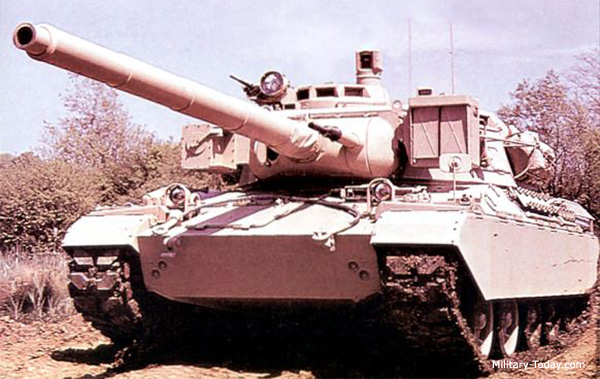
The AMX-32 main battle tank is a further development of the commercially successful AMX-30. It's development began in 1975. The first prototype was revealed in 1982. This MBT was developed as a private venture for the export market, however it received no production orders. The AMX-32 has improved armor protection. Composite armor was used on the frontal arc of the hull and turret. The AMX-32 has an all-welded turret, in place of the cast one on it's predecessor. Side skirts were added for better protection of the hull. It was also fitted with NBC protection and automatic fire suppression systems.
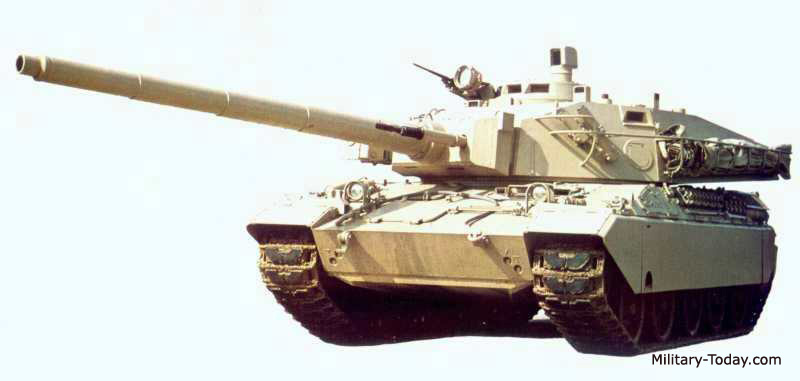
The AMX-32 is armed with a non-stabilized 105-mm rifled gun, similar to that of the AMX-30. It was also offered with new 120-mm smoothbore gun. Both guns fire standard NATO 105-mm or 120-mm rounds respectively. Variant with a 120-mm gun can carry a total of 38 rounds.
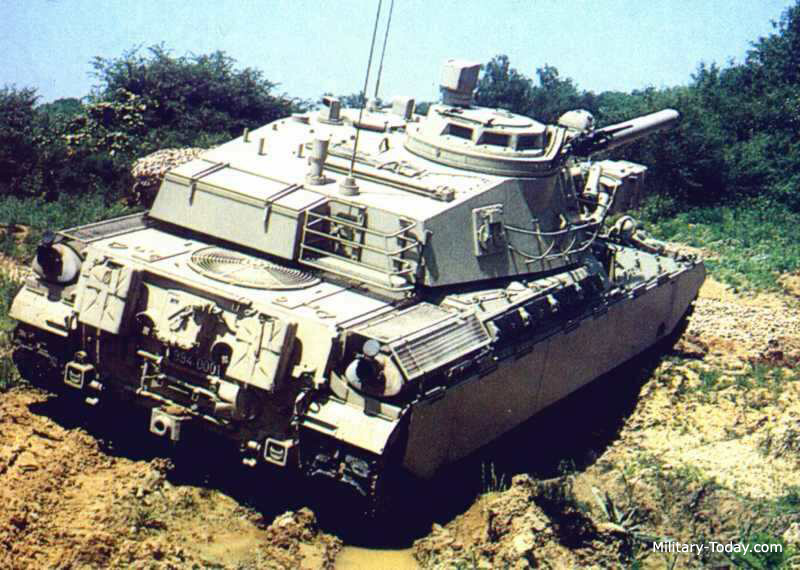
The AMX-32 was fitted with new COTAS fire control system. It consists of ballistic computer, passive observation and sighting equipment and laser rangefinder. The main drawback of this main battle tank was a lack of gun stabilization equipment and it could not fire accurately on the move. Still it was claimed that the AMX-32 has a 90% hit probability against stationary target in 2 000 m range in day or night conditions.
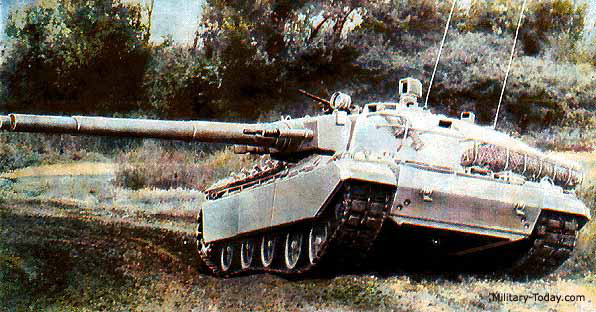
Secondary armament consists of 20-mm cannon with independent elevation and a roof-mounted 7.62-mm machine gun.
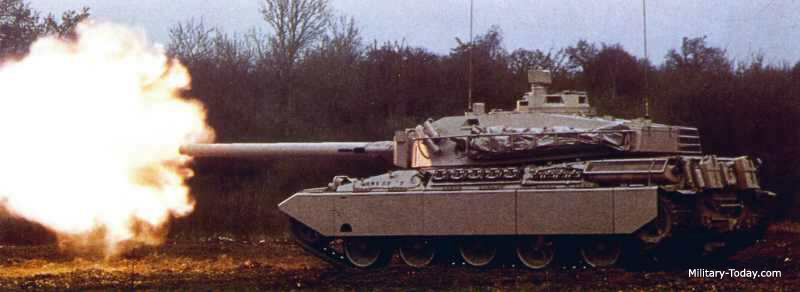
The AMX-32 could be powered either by the Hispano-Suiza HS-110 multi-fuel diesel engine of the AMX-30 MBT, developing 720 hp, or uprated HS-110-S2 unit, fitted on improved AMX-30B2 and developing 780 hp. Chassis of the AMX-32 is very similar to that of the AMX-30 with few minor improvements. Vehicle was fitted with a deep wading kit and could ford water obstacles up to 4 meters deep.
Military-today.com
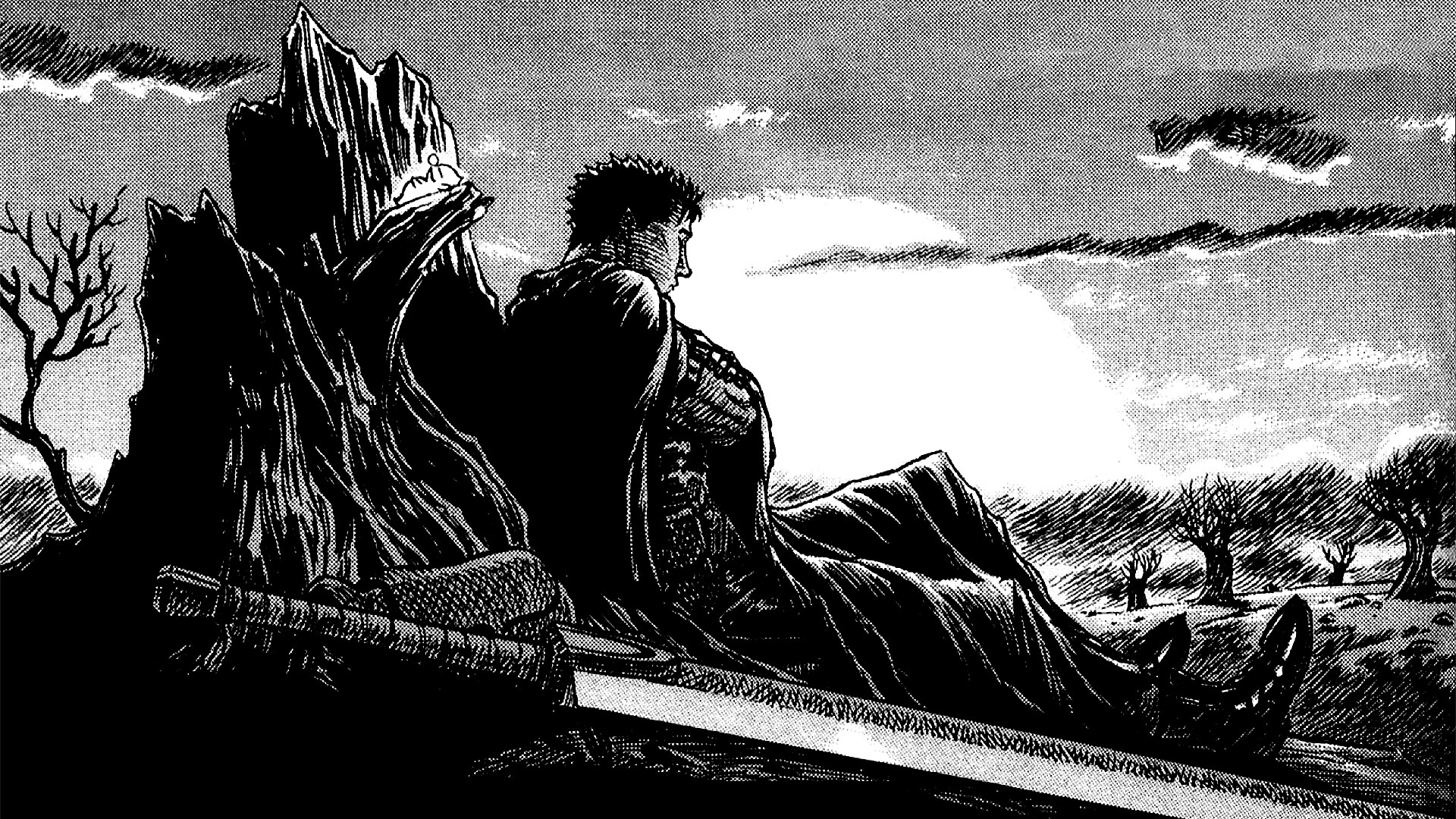
 Hello, I still lurk here sometimes. I hope all of you are still doing well, my very first true community. Remember that no matter how tough the going may become, you will get through it. :)
Hello, I still lurk here sometimes. I hope all of you are still doing well, my very first true community. Remember that no matter how tough the going may become, you will get through it. :)
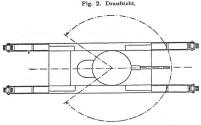
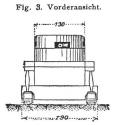
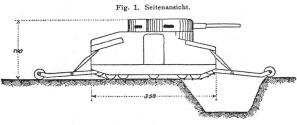
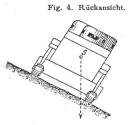

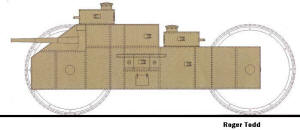
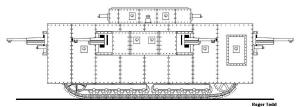

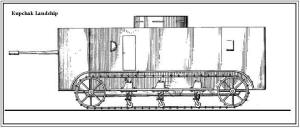
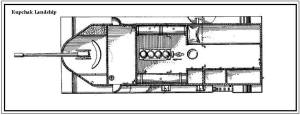
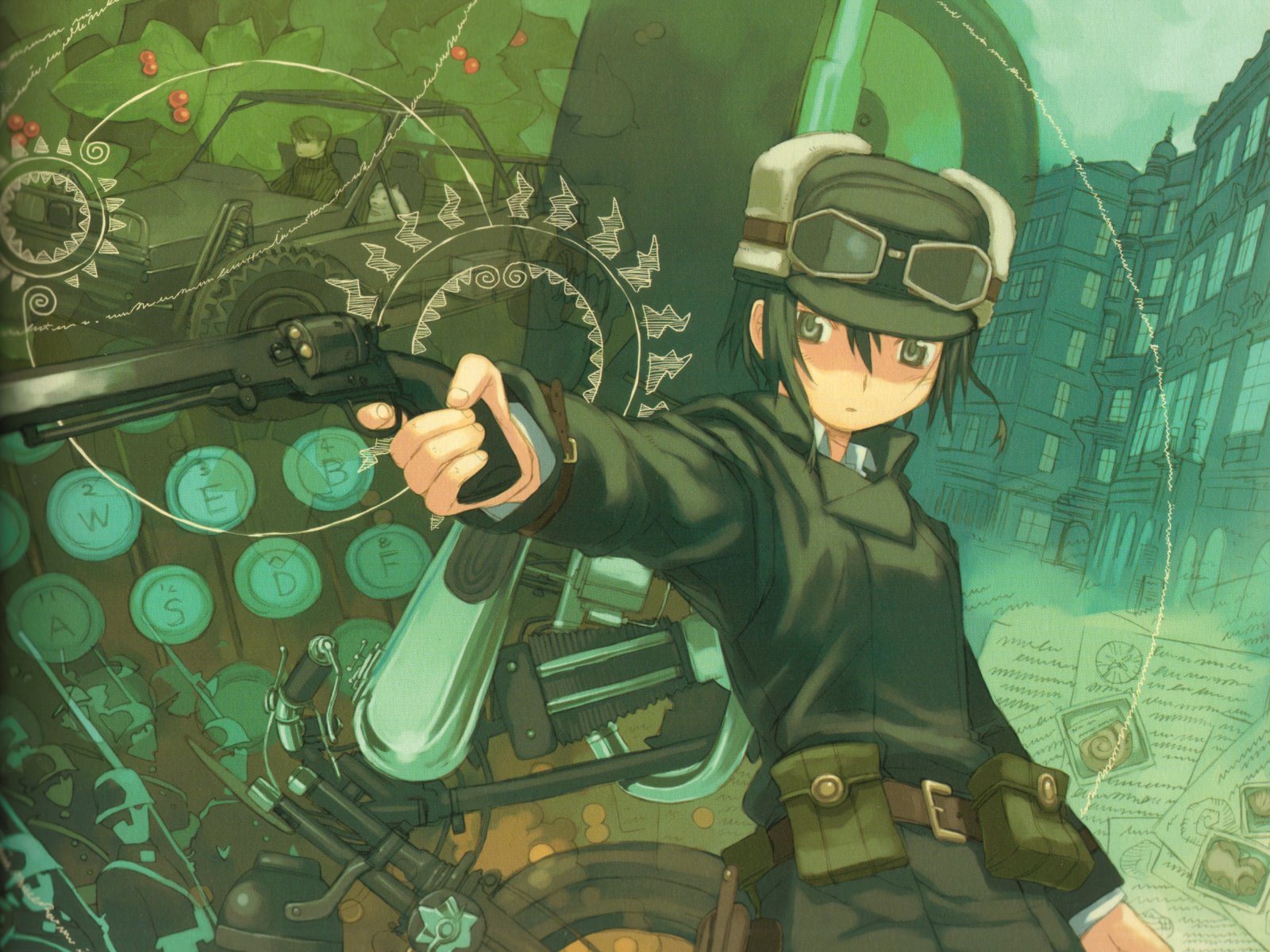
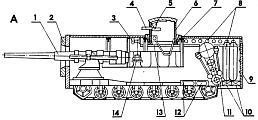
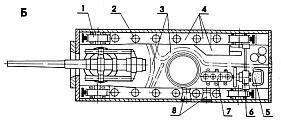
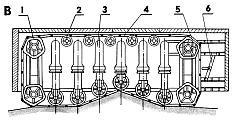
 It's amazing how quickly these past 5+ years have gone, but I'm still kicking. My activity has taken a dramatic drop for the time, however I appreciate all who have stuck by me. My main ambition was simply to improve this community, and while I feel I haven't been contributing as of late, there's always room for improvement. Anyways, cheers to another 5 years =3
It's amazing how quickly these past 5+ years have gone, but I'm still kicking. My activity has taken a dramatic drop for the time, however I appreciate all who have stuck by me. My main ambition was simply to improve this community, and while I feel I haven't been contributing as of late, there's always room for improvement. Anyways, cheers to another 5 years =3
